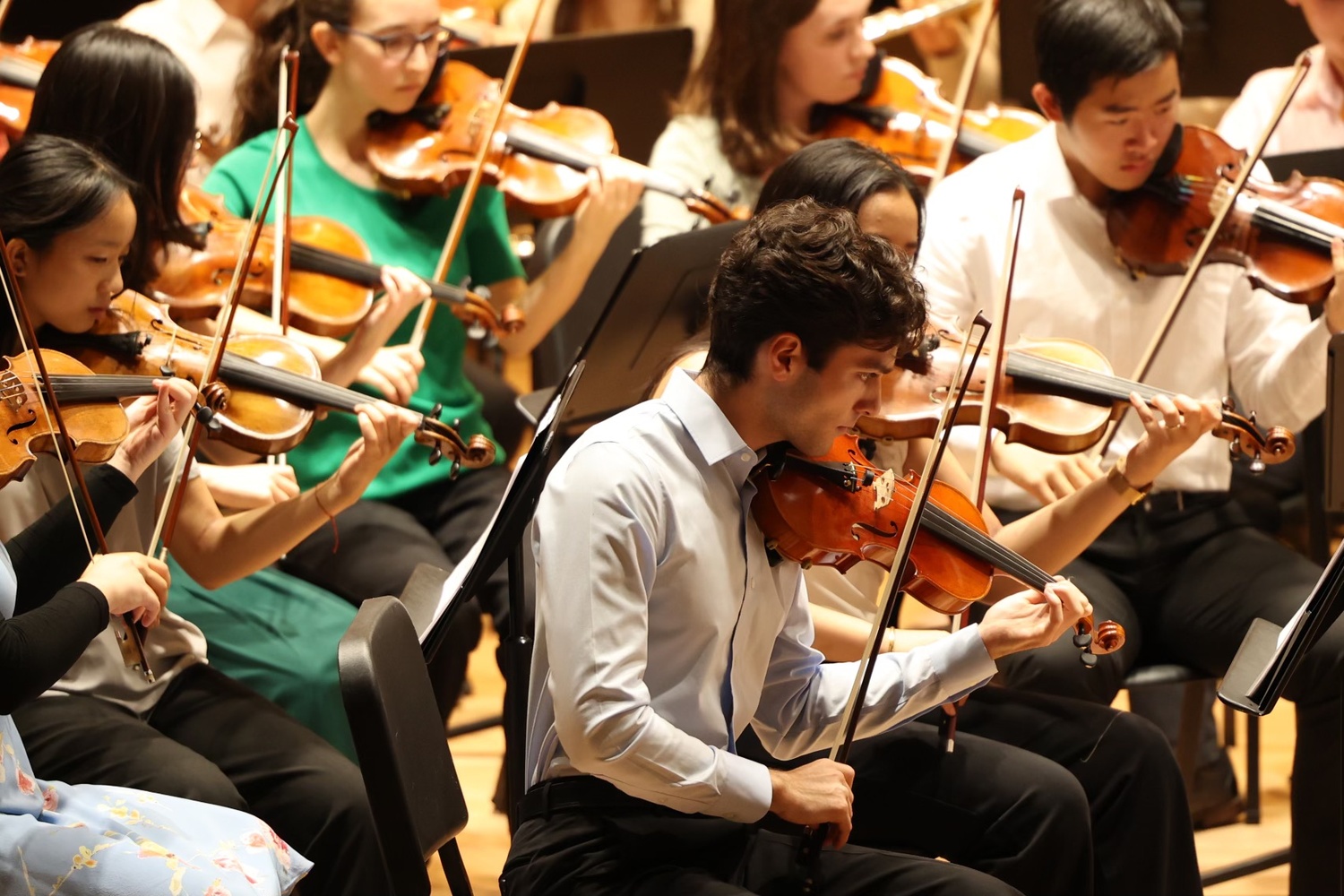
News
Garber Privately Tells Faculty That Harvard Must Rethink Messaging After GOP Victory

News
Cambridge Assistant City Manager to Lead Harvard’s Campus Planning

News
Despite Defunding Threats, Harvard President Praises Former Student Tapped by Trump to Lead NIH

News
Person Found Dead in Allston Apartment After Hours-Long Barricade

News
‘I Am Really Sorry’: Khurana Apologizes for International Student Winter Housing Denials
A Midsemester Night’s Concert: Harvard Bach Society Misses the Mark

Four chords — played resolutely by the woodwinds — open Felix Mendelssohn’s Overture to “A Midsummer Night’s Dream,” a piece he wrote at 17 years old. He completed the rest of the piece 16 years after he wrote the original overture. Light, mysterious, and intoxicating with a strange mix of whimsy and dark fatalism, the complete “A Midsummer Night’s Dream” has attracted audiences for almost 200 years. On Oct. 11 at Paine Hall, Harvard’s Bach Society Orchestra chose to open their season with this classic to mixed results.
A glaring problem became apparent at the beginning of the overture — the violins weren’t playing in tune. Thus the opening, which should sound like a whisper of things to come — swift and pregnant with mystery — ended up sounding shy and uncanny. The rest of the piece was similarly lacking; the horns and timpani had good moments, and the sheer noise of the orchestra when it played together was compelling — but the messiness of the intonation was too noticeable to ignore.
The subsequent scherzo was more pleasing. The basses and the cellos, featuring prominently in this movement, were lively and pitch-accurate. The woodwinds had some trouble staying in tune, as did the violins, but the movement as a whole was a good listen. However, another problem which had begun to reveal itself in the overture returned in the scherzo. The conductor, Enoch Li ’26, seemed to lack authority over the music. It’s tremendously impressive that a student can conduct an orchestra at such a proficient level, but while Li was great at keeping the orchestra together, he wasn’t making clear choices as to how the music should be played. The sound mix was ill-defined: There seemed to be little attention given to the balance of the instruments in the orchestra. Generally, few of his choices seemed to reveal anything about the music. At certain points he slowed the tempo of the music expertly, but some of the ritardandos felt too heavy handed. Aside from those moments of shifted tempo, though, there were very few points at which the conductor’s presence was felt.
The Bach Society decided to intersperse the music with short melodramas from Shakespeare’s play performed by Neeraja S. Kumar ’27, a Crimson editor, and Eliza R. Zangerl ’26. This decision went over quite well, and these scenes were some of the more captivating aspects of the performance as a whole. The entry of the opening melodrama was jarring at first, but its brevity and beautiful language justified its presence.
After the first dramatic interlude came the March of the Fairies, which presaged the famous “You Spotted Snakes” for chorus and two soloists. The March shared flaws with previous movements, and the ending was played apprehensively — the music puttered softly to a stop without assurance. The subsequent song performed by members of the Radcliffe Choral Society and the Harvard University Choir, however, was certainly the highlight of the whole concert. The orchestra gave the singers better playing than they gave to themselves, and the chorus shone. The two soloists were superb, and the first soloist Tara E. Guetzloe ’26 sang the difficult hook with ease and genuine emotion. The chorus, too, performed well — the extended “so goodnight” directly preceding the hook was especially ethereal, it was one of the few moments of the concert that warranted awe.
Next came another melodrama, the most memorable of all because of Zangerl’s acting. The moment in which Hermia realizes that she is alone in the forest and Lysander has left her felt strikingly real. After this came two of the more famous snippets of the piece: the Intermezzo and the Nocturne. Unfortunately, both faltered. The Intermezzo was largely out of tune and the horns in the Nocturne had beautiful moments, but ultimately couldn’t sustain the weight of their role.
Yet another short melodrama followed before the final leg of the concert consisting of four pieces in a row, with the last one overlaying a valedictory melodrama unifying speech and music. The ubiquitous “Wedding March” came first, and it was one of the better performed parts of the show. It had similar flaws to other moments in the concert, but the triumph of the movement was contagious. All three of the subsequent pieces — the “Funeral March,” “A Dance of Clowns,” and the Finale — failed to make a strong impression.
The music ended where it began, with the four woodwind chords of the overture, this time accompanied by a closing dialogue. If there was one thing that this concert delivered on, it was displaying the strong link between Shakespeare’s play and Mendelssohn’s music. The presence of the melodramas felt completely consistent with the piece. It served as a reminder that the music was originally intended to accompany Shakespeare’s play, despite typically being played on its own. While the Bach Society’s opening concert was quite technically lacking, it still conveyed the meaning of the music enough to make clear its natural kinship to the text that inspired it.
Want to keep up with breaking news? Subscribe to our email newsletter.
